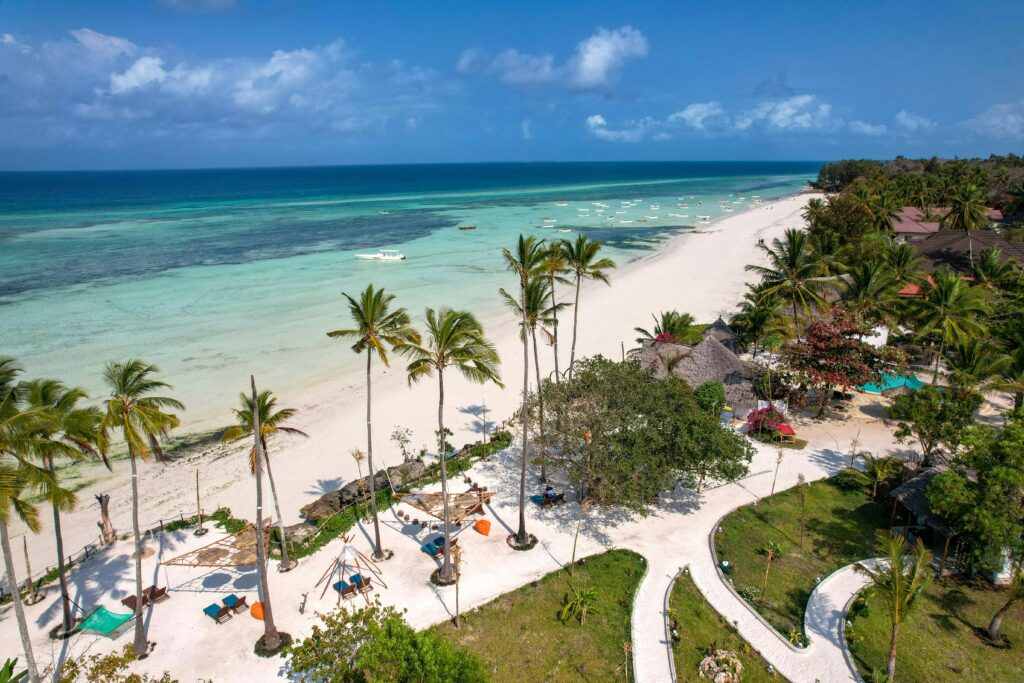|
Getting your Trinity Audio player ready... |
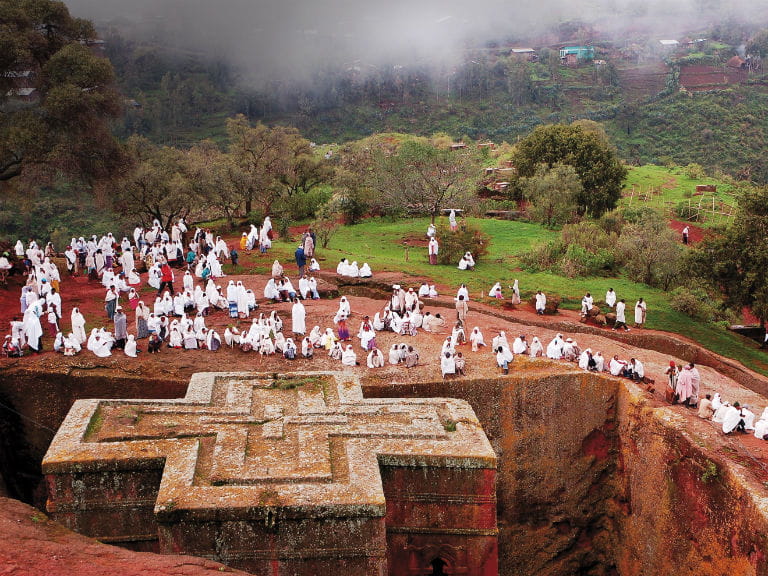
Perhaps you are considering visit Ethiopia, here are 15 ancient & historic monuments in Ethiopia to look out for during your visit.
Ethiopia, which is tucked away in the Horn of Africa, is a historical, cultural, and traditional country. Ethiopia provides visitors wishing to fully immerse themselves in its rich legacy, a tapestry of experiences, ranging from its ancient civilizations to its dynamic modern society.
Ethiopia’s history is made all the more fascinating by the abundance of old monuments that provide physical reminders of the past.
In this article, I’ll travel across East Africa history to uncover the 15 ancient & historic monuments in Ethiopia that bear witness to the nation’s enduring legacy.
Contents at a Glance
- 1 15 Historic Sites in Ethiopia Worth Visiting
- 1.1 1. The Obelisks of Aksum
- 1.2 2. The Temples of Lalibela
- 1.3 3. The Old Capital City of Gondar
- 1.4 4. Adadi Maryam
- 1.5 5 Melka Kunture Archaeological site
- 1.6 6. Palace of Aba Jiffar
- 1.7 7. Castle Gondar
- 1.8 8. Beta Giyorgis
- 1.9 9. Axum Stelae
- 1.10 10. Sof Omar Cave
- 1.11 11. Harar Jugol
- 1.12 12. The Debre Damo Monastery
- 1.13 13. Gheralta Rock-Hewn Churches
- 1.14 14 . Tiya Megalithic Site
- 1.15 15. Fasil Ghebbi
- 2 Frequently Asked Questions
- 3 Conclusion -15 Amazing Ancient Monuments in Ethiopia
15 Historic Sites in Ethiopia Worth Visiting
1. The Obelisks of Aksum

Aksum, which is sometimes spelled Axum, is the center of Ethiopian history. This oldest and holiest of towns is regarded by the majority of devoted Ethiopian history scholars as the most worthwhile destination on the northern historic circuit.
Still, a lot of inexperienced tourists would write it off as being boring compared to Gondar or Lalibela. Still, Aksum is replete with some amazing artifacts.
The tallest stelae (obelisks) ever built by the ancients can be found here, along with trilingual tablets with inscriptions from the time of Christ. If one approaches them with reasonable expectations, they can all be incredibly gratifying.
2. The Temples of Lalibela

One of the greatest things to do in Ethiopia is to visit Lalibela, the smallest of the three previous capitals that make up the center of the country’s historic cycle.
There is little doubt that the churches of Lalibela, which were included in the UNESCO World Heritage Site list in 1978.
The most amazing thing about these buildings is that, despite being excavated more than eight centuries ago, they are still active places of worship rather than just museum exhibits or archaeological digs. Lalibela is renowned for its Christmas festivities as well.
3. The Old Capital City of Gondar
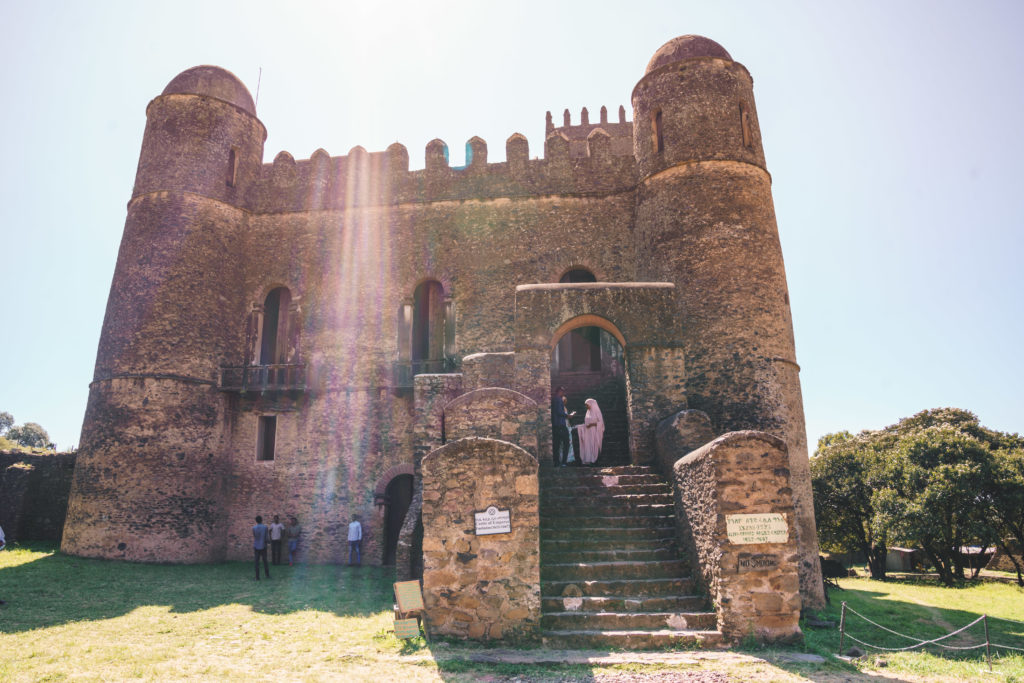
Situated in the fertile hills that divide Lake Tana from the higher Simien Mountains, the city of Gondar is situated at a moderate elevation of approximately 2200 meters.
This served as Ethiopia’s capital for over 200 years before Addis Ababa was established. It is frequently referred to as the “Camelot of Africa” because of its remarkable collection of stone castles with influences from Europe and India.
It is noticeably larger than both Aksum and Lalibela. The main focus of the city is the center of Fasil Ghebbi, or Royal Enclosure, which consists of six such castles.
The exquisitely painted suburban church of Debre Birhan Selassie and the more isolated, eerie Kuskuam complex, established in 1730 by the Empress Mentewab, are two other noteworthy locations.
4. Adadi Maryam

The capital city of Ethiopia, Addis Ababa, is only a short distance south of the rock-hewn church known as Adadi Maryam.
Smaller in scale than the famed churches of Lalibela, it is thought to have been carved in the 12th century by the nephew of King Lalibela.
The church, which is being used for worship today, is well-known for its striking murals and distinctive architectural elements.
5 Melka Kunture Archaeological site

The Melka Kunture Archaeological site, located just over the Awash River and an hour’s drive from Addis, is home to numerous fossils and stone tools that date back 1.8 million years. It also ranks as one of the most visit ancient and historic monuments in Ethiopia.
Numerous stone tools and artifacts from hundreds of thousands of years ago can be found there, offering important insights into the early history of human civilization in the area.
In addition, the location has prehistoric rock shelters and caves thought to have been inhabited by early humans. Tools used by the Homo erectus, who originally lived in the area, are among the artifacts on exhibit in four tukuls (huts).
There is also an open excavation site accessible by an occasionally muddy trail. It’s understated but intriguing. It is located a few kilometers west of the town of Awash Melka.
6. Palace of Aba Jiffar
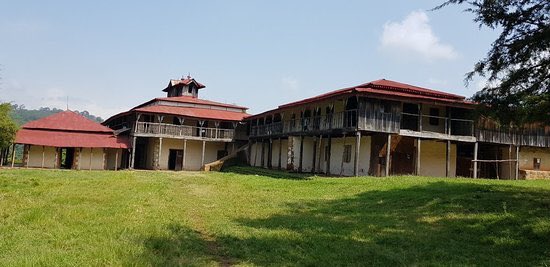
An exquisite example of Ethiopian palace construction can be seen in the town of Jijiga in Eastern Ethiopia, which is home to the Aba Jiffar Palace.
Aba Jiffar II constructed the palace in the early 20th century, combining Ottoman and indigenous Ethiopian architectural elements. It provides a window into Ethiopia’s more recent past with its elaborate furnishings, vibrant murals, and exquisite sculptures.
7. Castle Gondar

Known as the “Camelot of Africa,” Gondar was formerly the Ethiopian Empire’s capital. The spectacular castles that the city is known for were constructed in the 17th and 18th centuries by successive monarchs.
The most well-known of these is Fasilides Castle, a large stone building with towers and tall walls surrounding it. Gondar Castle is a well-liked tourist destination and a UNESCO World Heritage site today.
8. Beta Giyorgis
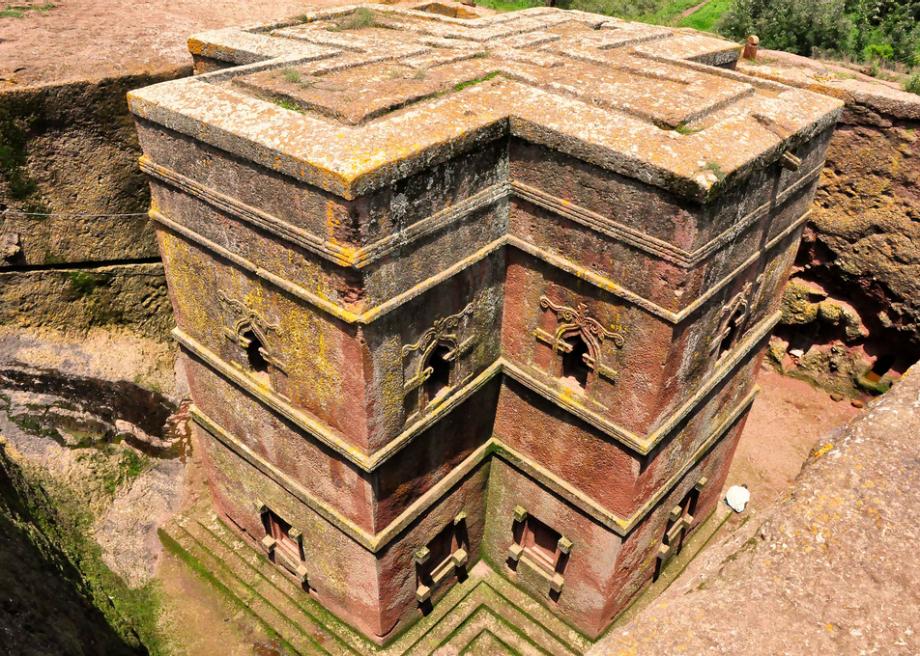
One of the most recognizable ancient & historical monument in Ethiopia in form of a church in Lalibela is Beta Giyorgis, often known as the Church of St. George. Considered the masterpiece of Lalibela’s rock-hewn cathedrals, it is carved in the shape of a cross from solid rock.
The church’s mystique and attraction are enhanced by its elaborate carvings and network of subterranean passageways and chambers.
9. Axum Stelae

A collection of well-carved stelae from the third and fourth centuries can also be found in the old city of Aksum, in addition to the obelisks.
These tall, thin pillars with ornate ornamentation and inscriptions marked the resting places of the Aksumite nobility.
Many of the stelae are extremely well-preserved despite their age, providing important insights into Aksumite art and society.
10. Sof Omar Cave

One of the biggest cave systems in Africa is the Sof Omar Cave, which is situated in the southeast Ethiopian Bale Mountains.
The cave, which stretches over 15 kilometers, is filled with enormous chambers, underground rivers, and breathtaking rock formations. For the local Muslim community, it is also a hallowed place since they consider it to be the residence of the esteemed Islamic Scholar Sheikh Sof Omar.
11. Harar Jugol
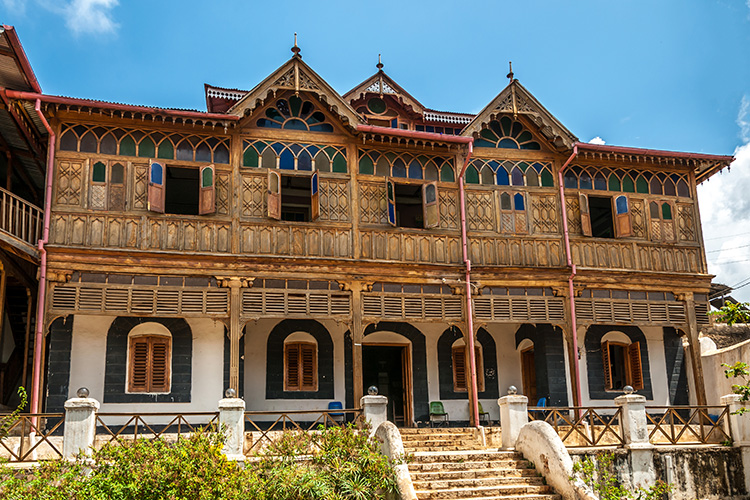
Harar Jugol is one of the oldest and best-preserved Islamic cities in Africa and a UNESCO World Heritage site.
Visitors can explore a maze of tiny lanes, classic homes, and busy marketplaces inside its historic walls. In addition, the city is well-known for its large number of shrines, mosques, and old structures that provide an insight into Ethiopia’s rich cultural past.
12. The Debre Damo Monastery

One of Ethiopia’s historic monuments and most remote holy locations is the Debre Damo Monastery, which is perched atop a precipitous cliff in the Tigray area.
The only way to reach the monastery, which was established in the sixth century by the fabled Saint Abuna Aregawi, is to ascend a sheer rock face using wooden ladders and ropes. Well, even with its isolated setting, Debre Damo is nevertheless a bustling hub for pilgrimage and devotion.
13. Gheralta Rock-Hewn Churches

There are numerous rock-hewn churches across the Gheralta region of northern Ethiopia, many of which are from the sixth century.
Engraved into the sheer rock faces and cliff faces, these churches are renowned for their exquisite paintings, elaborate carvings, and secluded settings, providing guests with an exceptional fusion of the natural world and cultural legacy.
14 . Tiya Megalithic Site
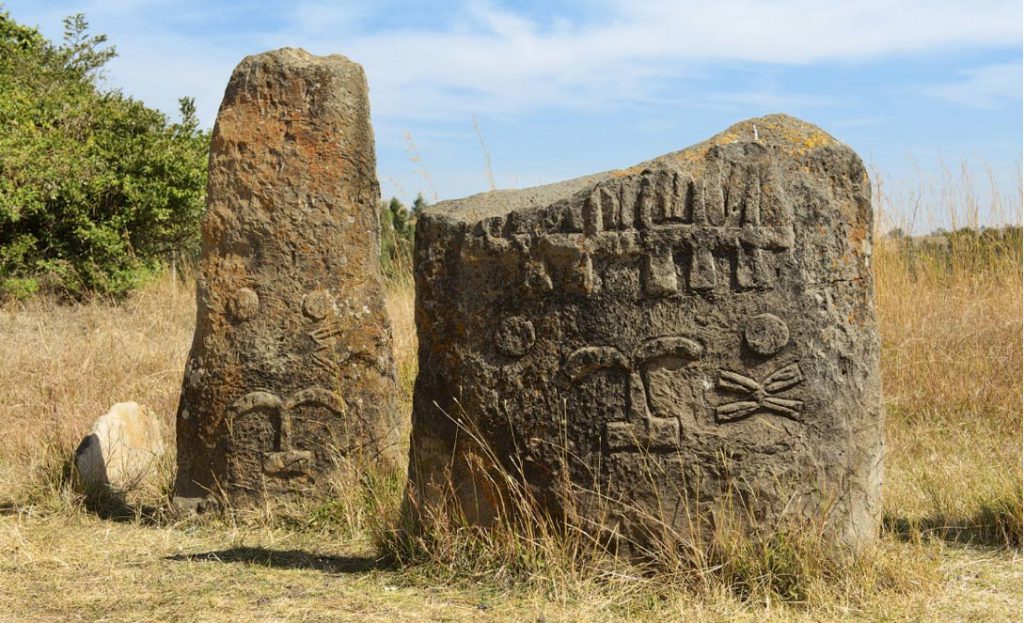
Another UNESCO World Heritage site, the Tiya Megalithic Site, is well known for its enigmatic stelae, or carved stone pillars.
These imposing monuments, which date from the tenth century, are decorated with elaborate patterns and symbols that have obscure meanings.
The site is significant as an archaeological and cultural site because it is thought to have functioned as a burial cemetery for elites from ancient Ethiopia.
15. Fasil Ghebbi
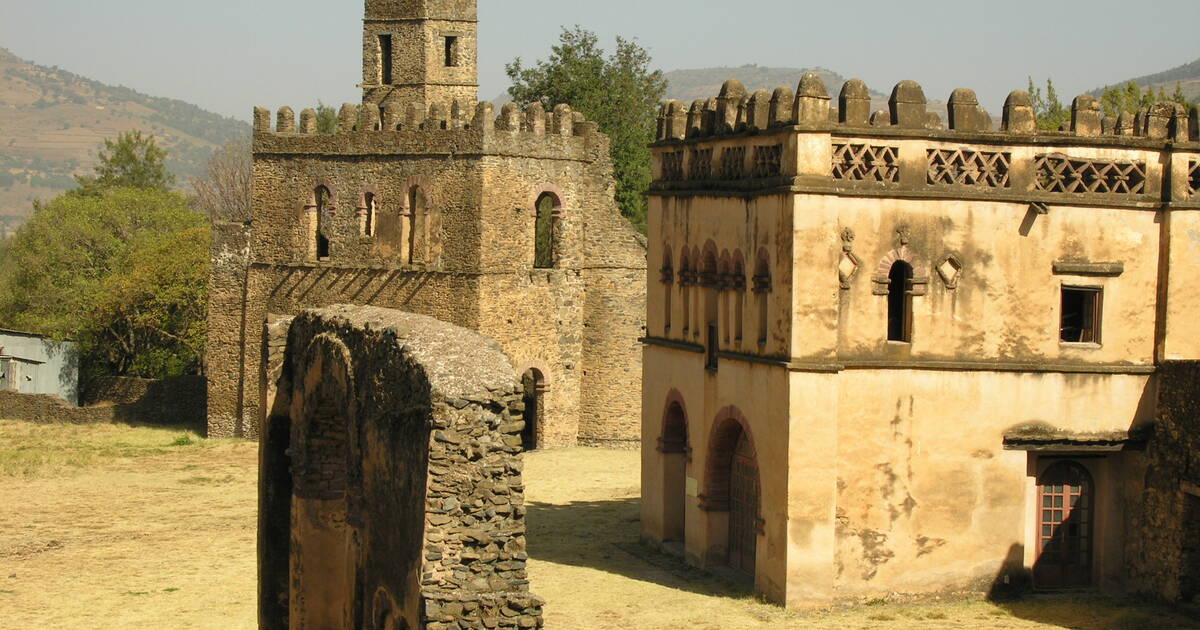
Fasil Ghebbi, a UNESCO World Heritage site in the city of Gondar, was once the royal enclosure of the Ethiopian emperors.
Constructed during the 17th century, this defensive complex consists of towering stone walls enclosing palaces, churches, and other buildings.
Ethiopian, Arab, and European influences are all mixed in the building, which is an interesting example of cross-cultural interaction.
Frequently Asked Questions
Which Ethiopian building is the oldest?
Yeha is home to the Temple of Yeha, Ethiopia’s oldest standing building. This tower, constructed in the Sabaean style, has been dated to approximately 700 BC using comparison with ancient South Arabian constructions.
Which Ethiopian palace is the oldest?
Constructed by Emperor Fasilidas, Enqualal Gemb, sometimes called the Egg Castle due to its dome roof shaped like an egg, is arguably the oldest building on the site and one of the most well-known buildings on the property.
Which Ethiopian landmark is the most well-known?
Among the various ancient & historic monuments in Ethiopia, Lalibela is a spectacular archeological site that is arguably the greatest in Africa. Designed by King Lalibela in the 13th century, this submerged city with 11 churches was intended to serve as a “New Jerusalem.” This was however planned following Muslim conquests that interrupted pilgrimages to the Holy Land.
Conclusion -15 Amazing Ancient Monuments in Ethiopia
Ethiopia’s historic sites are more than just artifacts from the past; they serve as active reminders of the rich and varied cultural legacy of the nation.
Every monument, from the imposing obelisks of Aksum to the hewn cathedrals of Lalibela, narrates a tale of artistic achievement, technological prowess, and religious devotion.
Traveling back in time, tourists can better appreciate Ethiopia’s lasting impact and its place in human history as they explore these historic monuments.
The ancient & historic monuments in Ethiopia are likely to create a lasting memory that evokes awe and amazement for decades to come. This is true even if you’re a history buff, an art aficionado, or just a curious tourist.

